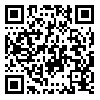BibTeX | RIS | EndNote | Medlars | ProCite | Reference Manager | RefWorks
Send citation to:
URL: http://jssu.ssu.ac.ir/article-1-3356-en.html
Introduction: Aflatoxin is the most important mycotoxin toxicity and can enter the animal or human reproductive systems and cause some problems in relation to semen quality and fertility decline. The aim of this study was to investigate the effect of aflatoxin on histological structure of the testes and sperm characteristics and cellular targets in spermatogenic compartment and blood level of testosterone and fertility potential.
Methods: In this experimental study, 40 adult male mice were divided into 4 groups as the control and experimental groups. Experimental groups have received aflatoxin (100, 350, 700µg/kg) by gastric intubation daily. After 45 days, the mice were sacrificed and sperm samples were collected from cauda epididyms in order to evaluate the sperm parameters and perform the in-vitro fertilization analyses.
Results: Analyses of sperm parameters demonstrated that sperm motility decreased remarkably (P<0.05) in all three groups of aflatoxin in comparison with the control. Moreover, the percentage of sperms with DNA disintegrity and nuclear immaturity were significantly increased in aflatoxin groups (P<0.05). Results from IVF showed that aflatoxin have been significantly decreased the sperm fertilization potential, preimplantation embryonic development, embryonic quality and percentage of 2-cells embryos and blasocyste in comparison with the control group. Percentage of arrested embryos with high lysis and fragmantation have been increased significantly in aflatoxin-treated groups (P<0.05).
Conclusion: Totally, the present results highly support the idea that aflatoxin induces testicular toxicity with adverse effect on sperm quality and fertility potential in a dose-dependent manner.
Received: 2015/08/14 | Accepted: 2017/01/7 | Published: 2017/05/8
| Rights and permissions | |
 |
This work is licensed under a Creative Commons Attribution-NonCommercial 4.0 International License. |





